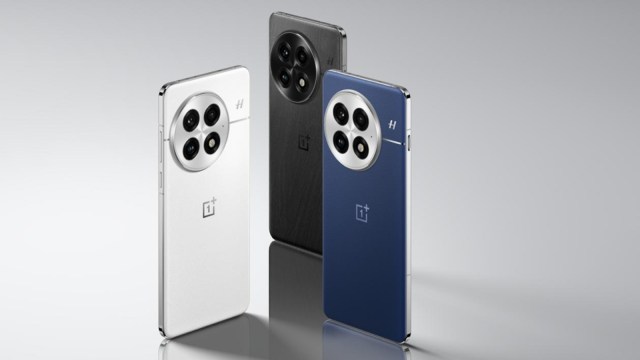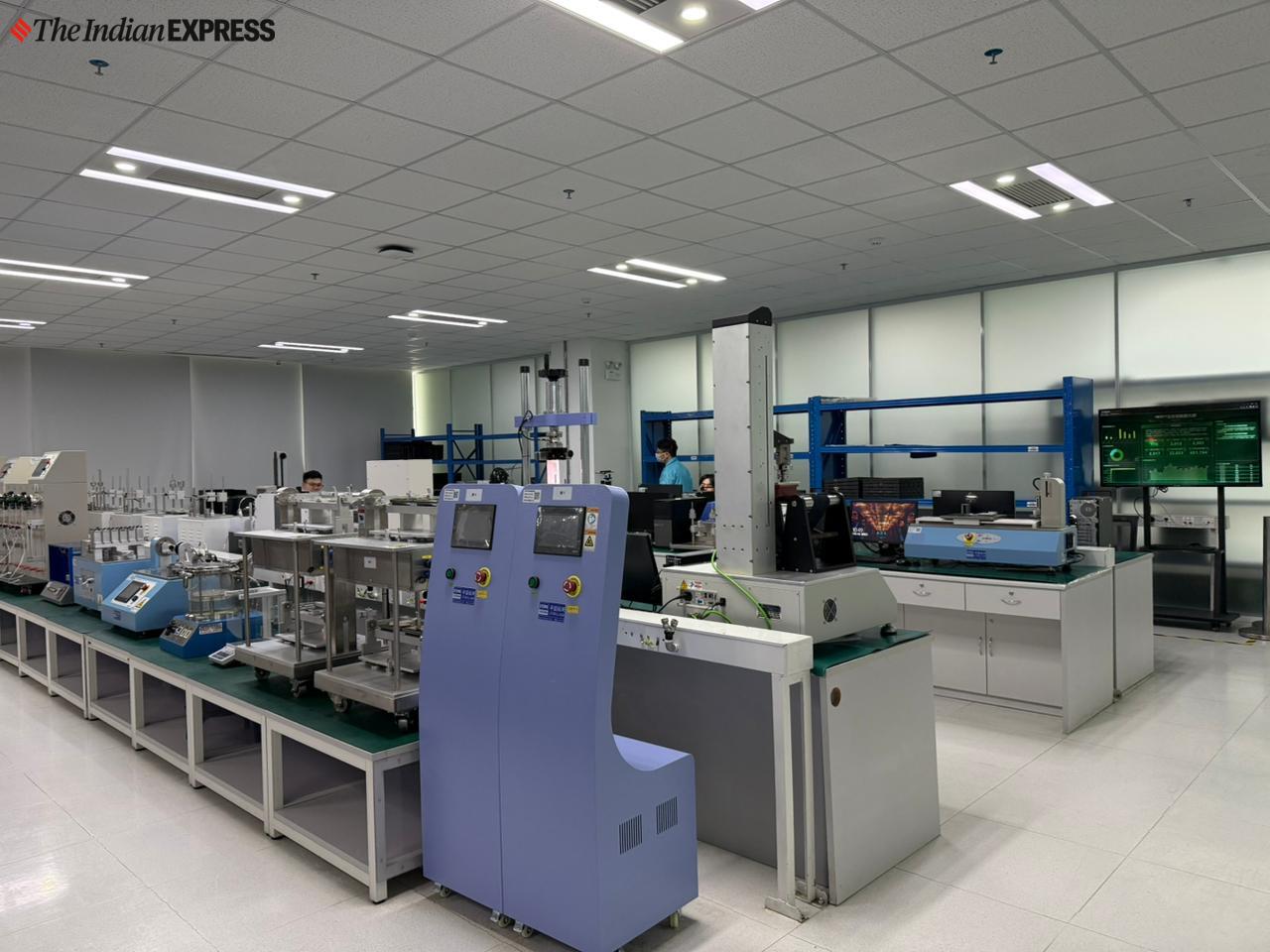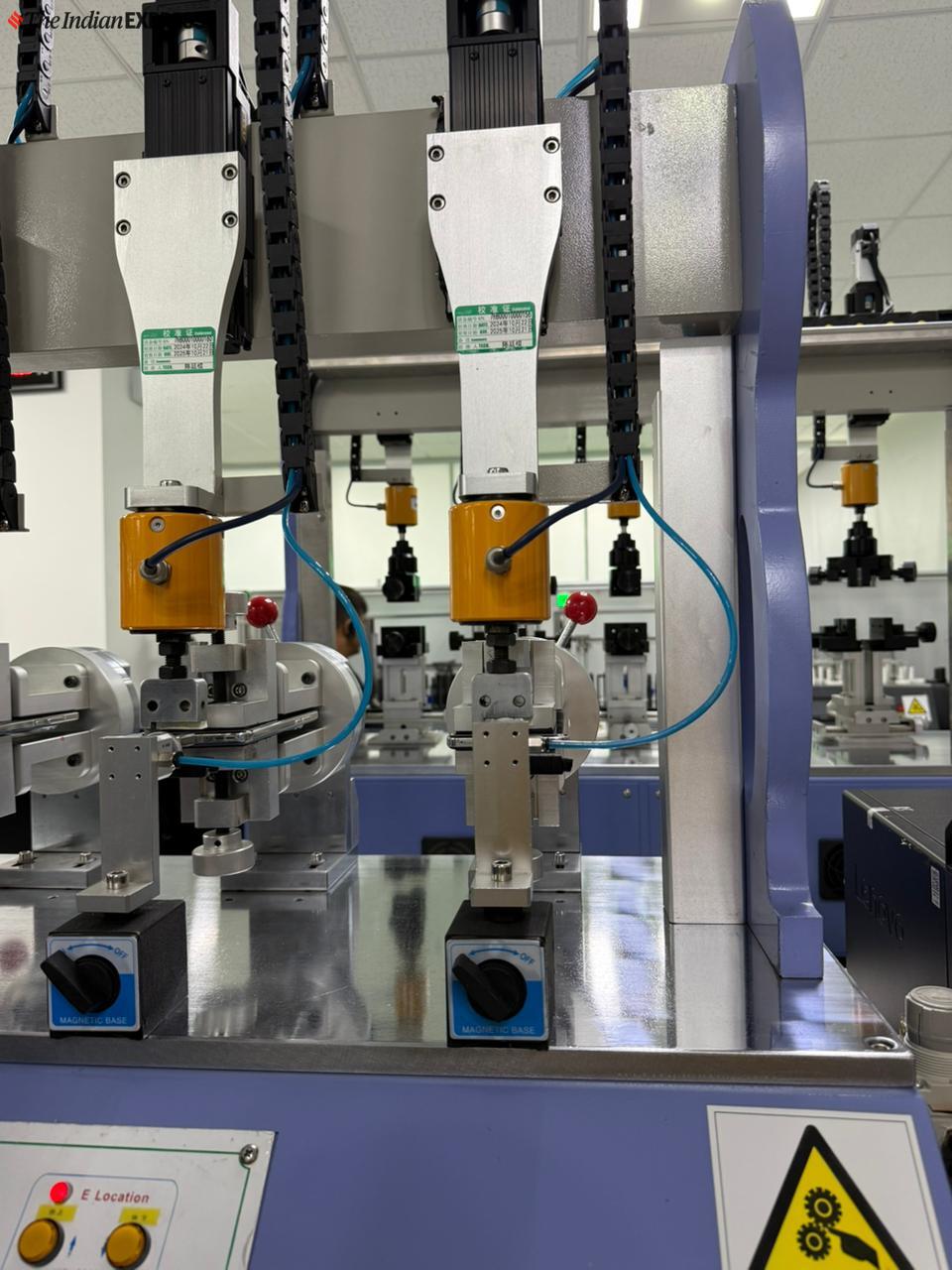OnePlus will invest Rs 2000 crore every year for the next three years in India, as the handset maker aims to revive its market share in the premium smartphone segment and compete with Apple Inc and Samsung Electronics in the world’s second-largest smartphone market. The investment is part of “Project Starlight,” which focuses on enhancing product durability, improving customer service, and developing India-specific features.

Project Starlight
 OnePlus has a state-of-the-art testing lab in Shenzhen, China (Image credit: Anuj Bhatia/The Indian Express)
OnePlus has a state-of-the-art testing lab in Shenzhen, China (Image credit: Anuj Bhatia/The Indian Express)
The handset maker’s Project Starlight is focused on three key areas that, according to the brand, will enhance its products and customer experience. Starting with the OnePlus 13, the company is revising its internal product testing processes to ensure its smartphones function seamlessly, particularly in India’s diverse climate conditions. It features a new display technology designed to perform reliably even under India’s harsh sunlight. Additionally, OnePlus is introducing a new protective layer for its AMOLED displays, dubbed the Green Line Worry-Free Solution, to address the display issues that previously frustrated its users in India.
OnePlus is also looking to increase its service centres in India. In recent months, it has expanded its service centres by 22 per cent including 11 per cent that are exclusive service centres directly owned by the brand. It plans to further expand its service centres by 50 per cent by mid-2026, focusing on building a network in tier-1 and tier-2 cities across India. Additionally, the brand is upgrading half of its flagship retail stores to provide a better in-store experience.
 OnePlus is adding a new protective layer to all its AMOLED displays to address the issue of green line concerns. (Image credit: Anuj Bhatia/The Indian Express)
OnePlus is adding a new protective layer to all its AMOLED displays to address the issue of green line concerns. (Image credit: Anuj Bhatia/The Indian Express)
Under Project Starlight, OnePlus is also exploring ways to introduce software features tailored specifically for the Indian market. This is a more ambitious initiative, and the brand is collaborating with partners to bring it to fruition. For instance, the OnePlus 13 supports 5.5G, or 5G Advanced, a technology based on existing 5G infrastructure that enables the phone to connect to three cells simultaneously, significantly boosting network speeds. OnePlus has worked closely with Reliance Jio to test 5.5G in India.
In addition, OnePlus has tested a new mobile signal enhancement feature designed for challenging environments, such as the Delhi Metro, where maintaining a signal can be difficult. When enabled, this feature allows the OnePlus smartphone to intelligently identify and connect to the optimal base station, ensuring a seamless connection. The brand has also introduced Steady Connect, a new feature that extends Bluetooth connection range up to 360 meters, ensuring connections remain stable even in areas with heavy traffic and interference, such as subways.
Generative AI
 OnePlus is bringing Gen AI features to its smartphones. (Image credit: OnePlus)
OnePlus is bringing Gen AI features to its smartphones. (Image credit: OnePlus)
The popularisation of generative artificial intelligence through OpenAI’s ChatGPT has led to smartphone makers exploring the use case of running AI features on the device. This, however, requires reductions in the size of the large language models that power AI, as well as higher-performance processors.
Story continues below this ad
When the OnePlus 13 hits the market, it will feature a range of AI capabilities, including AI Blur, which removes blurriness from photos and restores clarity; Clear AI Reflection Eraser, which reduces window glare in photos; AI Detail Boost, which ensures photos remain crystal clear even after zooming in or cropping; and the Intelligent Search feature, which allows users to search through their phone’s settings, My Files, Notes, and Photos apps using in-app keyword searches and natural language processing, developed with Google’s Gemini model. These AI-enhanced features position the OnePlus 13 head-to-head with competitive devices from rival brands, though OnePlus stated it has taken a “meaningful” approach to adopting new advancements.
“OnePlus has seen significant growth over the past decade. However, Apple’s increased focus on India, combined with its offline store expansion, enhanced product availability, and trade-in offers, has intensified competition, posing challenges for both Samsung and OnePlus. While OnePlus remains one of the top brands in the mid-premium segment, it is facing increasing competitive pressure,” Ekta Mittal, Senior Analyst for Connected Devices (Smartphones, Wearables, AR/VR, refurbished devices) at CCS Insight, told indianexpress.com.
Mittal, however, believes that OnePlus has a loyal following and a huge user base. While the company has seen a blip in the Indian market, it continues to address temporary challenges related to hardware, screen replacement, and retailer relationships.
Mittal is of the view that OnePlus should place greater emphasis on the $400-$600 segment, which helped define its identity as an affordable premium brand. Right now, every large smartphone maker is betting on premium smartphones to increase the average selling price (ASP) and expand the market share, where Apple dominates but it has always been an aspirational play.
Story continues below this ad
Filling the gap
 OnePlus has strengthened the durability of its smartphones and how they are tested internally at its labs. (Image credit: Anuj Bhatia/The Indian Express)
OnePlus has strengthened the durability of its smartphones and how they are tested internally at its labs. (Image credit: Anuj Bhatia/The Indian Express)
According to International Data Corporation (IDC), the premium segment ($600 to $800) registered the highest growth of 86 per cent in Q3 2024, with a 4 per cent share, up from 2 per cent a year ago. The iPhone 15/13/14, Galaxy S23, and OnePlus 12 remain the most popular premium smartphones in India. But Apple’s share increased year over year to 71 per cent, while Samsung’s share dropped to 19 per cent, down from 30 per cent a year ago. OnePlus is clearly looking to fill the gap and gain the market share.
“OnePlus’ recent shift toward multiple price bands has somewhat diluted its core appeal, leaving its original sweet spot under-served. In the lower price range, premium features have been compromised, while higher-priced models struggle to deliver strong value. Strengthening the supply chain, ensuring consistent product availability across online and offline channels, enhancing retailer relationships, and improving after-sales support and seamless hardware/software upgrades will be important for maintaining consumer trust and loyalty,” said Mittal.
With Samsung’s grip on the premium smartphone segment in India not what it used to be, experts say OnePlus has a chance to grow, but it first needs to fix the issues that have plagued its smartphones in recent months. After all, persuading more consumers to pay those prices for a flagship smartphone can be a challenge, with many concerned about the durability and longevity of OnePlus devices.
OnePlus underwent a management reshuffle earlier this year. The brand appointed Robin Liu, the former head of sales in India and CEO in North America, as the new head of its India operations. The smartphone maker also reappointed Ramagopala Reddy as Vice President for the India region, who leads product strategy efforts.



 OnePlus has a state-of-the-art testing lab in Shenzhen, China (Image credit: Anuj Bhatia/The Indian Express)
OnePlus has a state-of-the-art testing lab in Shenzhen, China (Image credit: Anuj Bhatia/The Indian Express) OnePlus is adding a new protective layer to all its AMOLED displays to address the issue of green line concerns. (Image credit: Anuj Bhatia/The
OnePlus is adding a new protective layer to all its AMOLED displays to address the issue of green line concerns. (Image credit: Anuj Bhatia/The  OnePlus is bringing Gen AI features to its smartphones. (Image credit: OnePlus)
OnePlus is bringing Gen AI features to its smartphones. (Image credit: OnePlus) OnePlus has strengthened the durability of its smartphones and how they are tested internally at its labs. (Image credit: Anuj Bhatia/The Indian Express)
OnePlus has strengthened the durability of its smartphones and how they are tested internally at its labs. (Image credit: Anuj Bhatia/The Indian Express)





